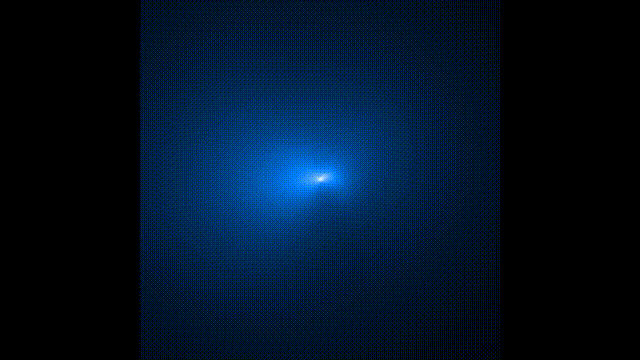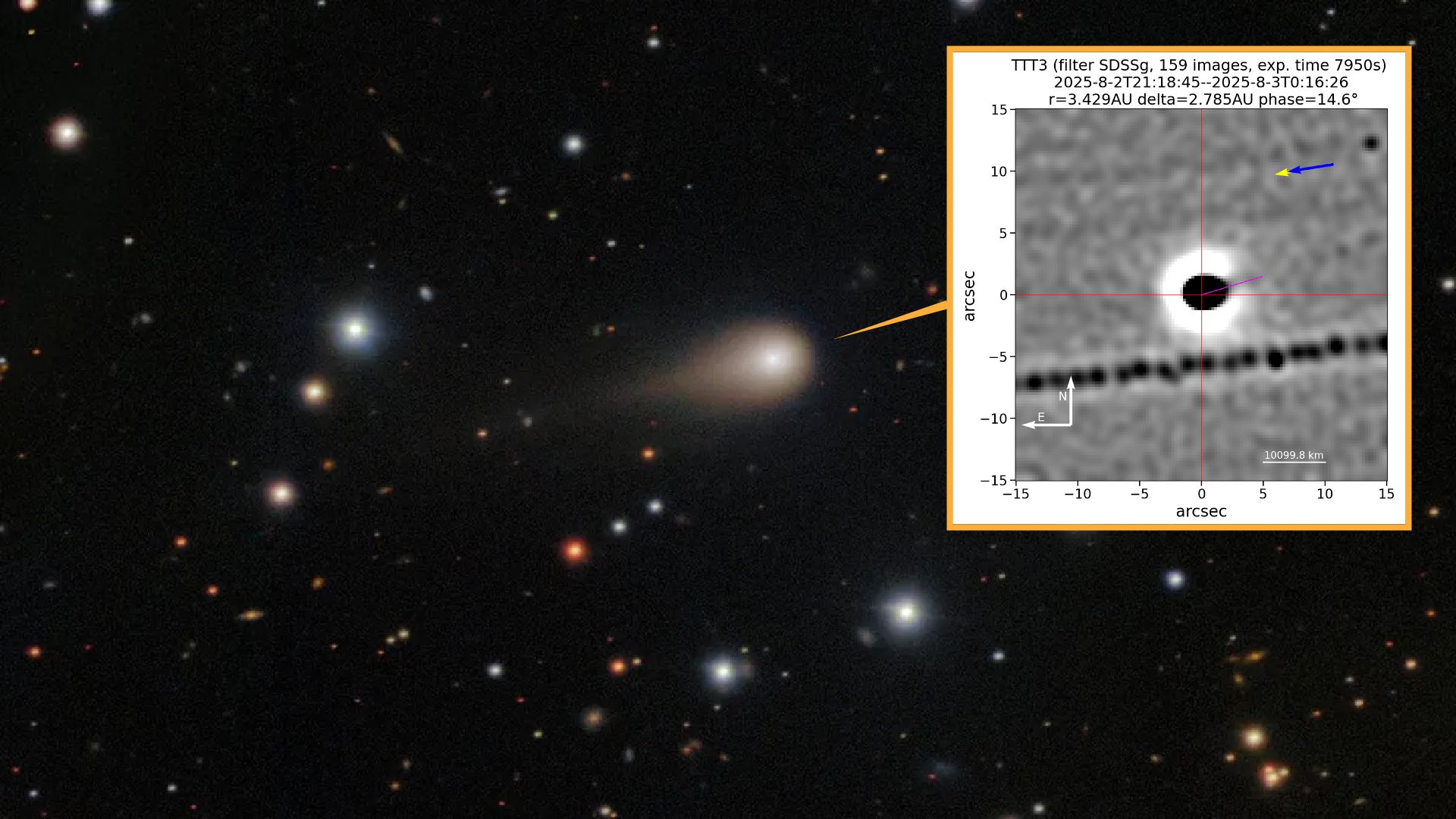Newly released images of the interstellar comet 3I/ATLAS appear to show the alien object spitting out an enormous jet of gas and dust toward the sun — just as comets are expected to do.
Discovered in late June and confirmed by NASA in early July, the comet originates from an unknown star system far beyond our own. 3I/ATLAS is only the third interstellar object ever detected. At somewhere between 3 and 7 miles (5 to 11 kilometers) wide, it is the largest interstellar object ever to cross our path, and likely the oldest, potentially dating to billions of years before the birth of the sun.
Combining 159 exposures lasting 50 seconds each, the composite image shows the icy body (or nucleus) of 3I/ATLAS as a big, black dot, surrounded by a white glow. A sudden, fan-shaped break in this glowing ring shows where researchers say a large, high-speed jet of material (marked in purple) is blasting off of the comet in the direction of the sun. The image was shared to the transient object monitoring site The Astronomer’s Telegram on Oct. 15 but has not yet been published in a peer-reviewed study.
Comets are famous for their glowing tails of ionized gas, the largest of which can stretch for hundreds of millions of miles in the opposite direction of the sun. Comet jets, by comparison, are much smaller and can point toward the sun. While a cannon of dust aimed at our star might sound suspicious, it’s just a standard part of a comet’s anatomy, Miquel Serra-Ricart, an astrophysicist and chief science officer at the Teide Observatory’s Light Bridges research institution, told Live Science in an email.
“This is the usual,” Serra-Ricart, who posted the new images, told Live Science. “Jets are pointing to [the] sunward direction and [the] comet’s tail in the anti-solar direction.”
This is because comets inevitably heat up as they swoop closer to the sun — but they don’t always heat evenly. The sun-facing side of the comet heats up the fastest, and if a particular weak spot on the comet’s surface warms up enough, a growing supply of sublimated gases can blast out like a geyser, shooting cometary material thousands of miles toward the sun.

As the comet’s nucleus rotates, the jet can take on a fan shape akin to what we see in the new TTT image, Serra-Ricart added. The famous naked-eye comet NEOWISE also developed fan-like jets after its close flyby of the sun in 2020, Hubble Space Telescope observations showed at the time.
Some of that jet material ends up in the comet’s coma (the glowing plume of material that surrounds the nucleus), while some may be forced into the comet’s tail by radiation pressure from the onslaught of incoming solar wind. This is why comets can sport both a sun-facing jet and an anti-sunward tail at the same time — no alien technology required.
It’s unclear how far this newly discovered jet extends at the moment, but Serra-Ricart estimated that it could stretch roughly 6,200 miles (10,000 km) from 3I/ATLAS’ surface. The jet is likely composed largely of dust particles and carbon dioxide, he added, which is consistent with the makeup of the large gassy plume that the James Webb Space Telescope detected around the comet in August.
3I/ATLAS swooped past Mars on Oct. 3 and is currently approaching its closest point to the sun (perihelion), which it will reach on Oct. 29. The comet is on the far side of the sun now and won’t be visible from Earth again until mid-November. When it reemerges, astronomers will get a rare chance to see how the mysterious visitor changed after its date with the sun and to what extent its jet and tail may have grown.
First Appeared on
Source link













